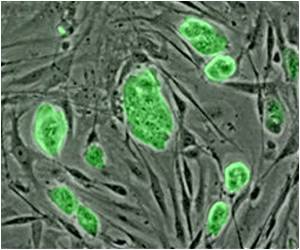Researchers have created the most detailed 3-D picture yet of a membrane protein that is linked to learning, memory, anxiety, pain and brain disorders such as schizophrenia, Parkinson's, Alzheimer's and autism.

The research—which focuses on the mGlu1 receptor—was reported in the March 6, 2014 issue of the journal Science.
A Family of Drug Targets
The mGlu1 receptor, which helps regulate the neurotransmitter glutamate, belongs to a superfamily of molecules known as G protein-coupled receptors (GPCRs).
GPCRs sit in the cell membrane and sense various molecules outside the cell, including odors, hormones, neurotransmitters and light. After binding these molecules, GPCRs trigger a specific response inside the cell. More than one-third of therapeutic drugs target GPCRs—including allergy and heart medications, drugs that target the central nervous system and anti-depressants.
Source-Eurekalert















